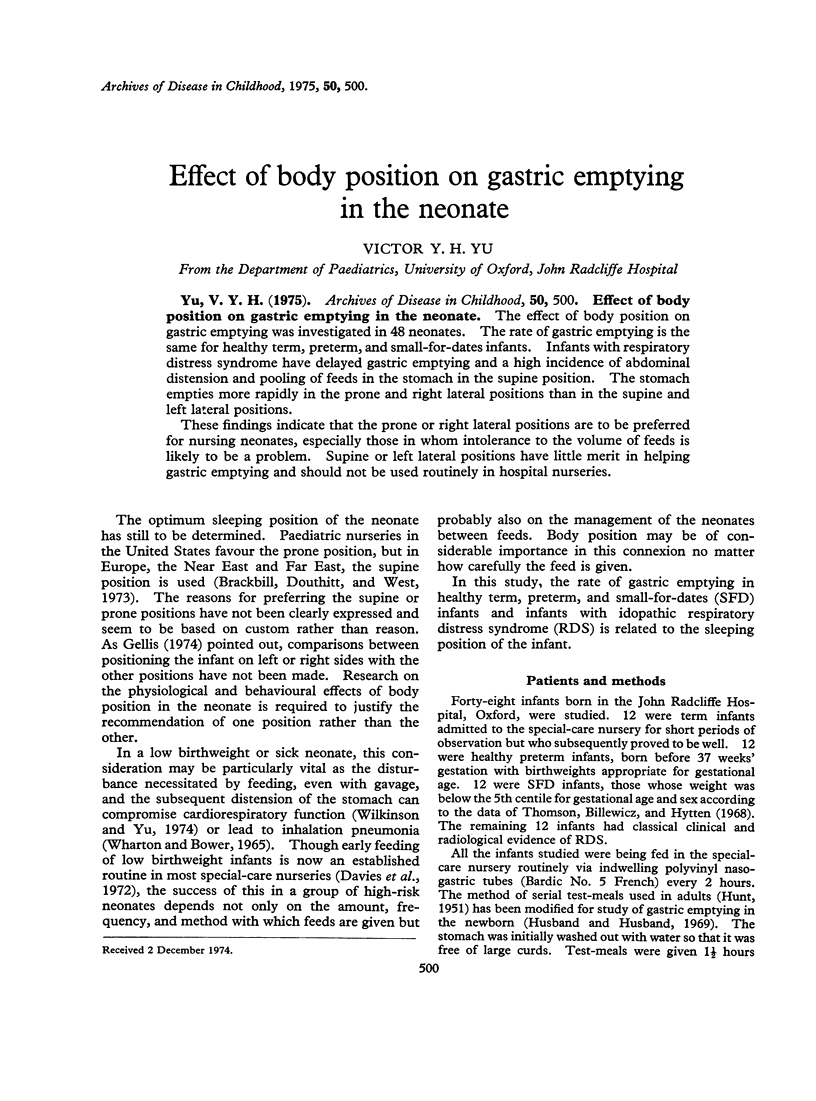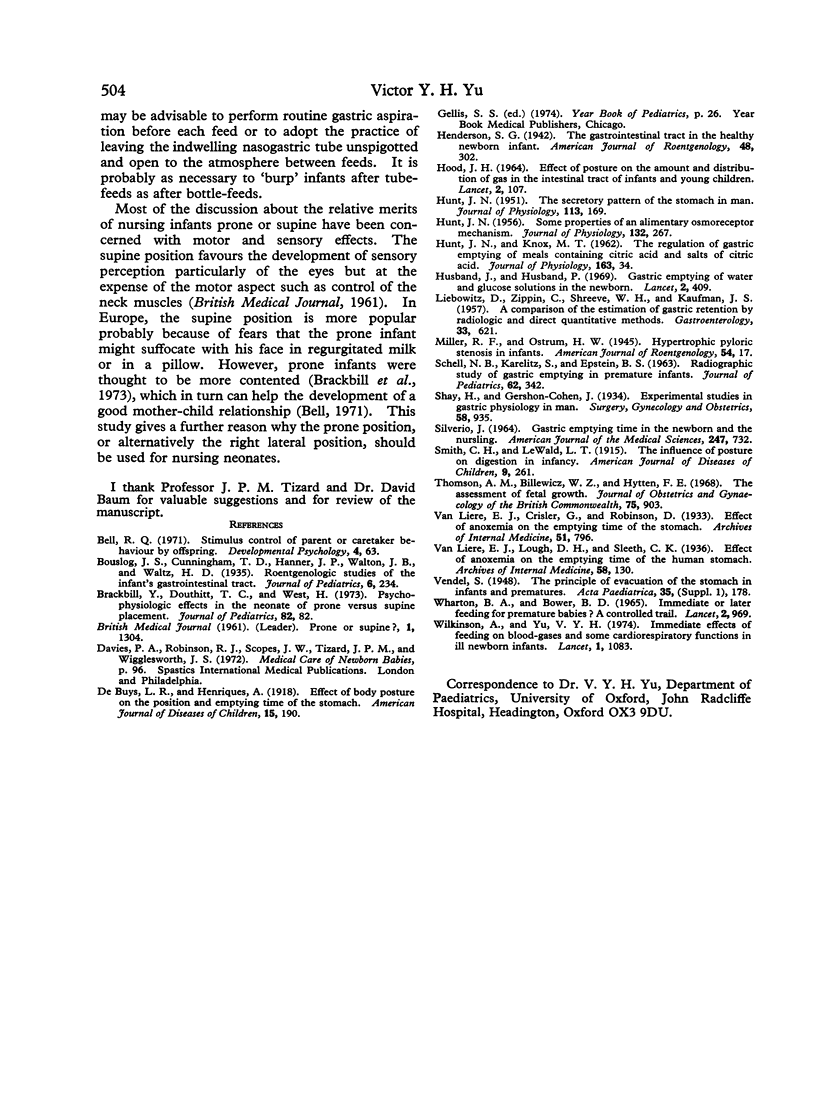Abstract
The effect of body position on gastric emptying was investigated in 48 neonates. The rate of gastric emptying is the same for healthy term, preterm, and small-for-dates infants. Infants with respiratory distress syndrome have delayed gastric emptying and a high incidence of abdominal distension and pooling of feeds in the stomach in the supine position. The stomach empties more rapidly in the prone and right lateral positions than in the supine and left lateral positions. These findings indicate that the prone or right lateral positions are to be preferred for nursing neonates, especially those in whom intolerance to the volume of feeds is likely to be a problem. Supine or left lateral positions have little merit in helping gastric emptying and should not be used routinely in hospital nurseries.
Full text
PDF




Selected References
These references are in PubMed. This may not be the complete list of references from this article.
- HOOD J. H. EFFECT OF POSTURE ON THE AMOUNT AND DISTRIBUTION OF GAS IN THE INTESTINAL TRACT OF INFANTS AND YOUNG CHILDREN. Lancet. 1964 Jul 18;2(7351):107–110. doi: 10.1016/s0140-6736(64)90121-7. [DOI] [PubMed] [Google Scholar]
- HUNT J. N., KNOX M. T. The regulation of gastric emptying of meals containing citric acid and salts of citric acid. J Physiol. 1962 Aug;163:34–45. doi: 10.1113/jphysiol.1962.sp006957. [DOI] [PMC free article] [PubMed] [Google Scholar]
- HUNT J. N. Some properties of an alimentary osmoreceptor mechanism. J Physiol. 1956 May 28;132(2):267–288. doi: 10.1113/jphysiol.1956.sp005524. [DOI] [PMC free article] [PubMed] [Google Scholar]
- HUNT J. N. The secretory pattern of the stomach of man. J Physiol. 1951 Apr;113(2-3):169–184. doi: 10.1113/jphysiol.1951.sp004563. [DOI] [PMC free article] [PubMed] [Google Scholar]
- Husband J., Husband P. Gastric emptying of water and glucose solutions in the newborn. Lancet. 1969 Aug 23;2(7617):409–411. doi: 10.1016/s0140-6736(69)90114-7. [DOI] [PubMed] [Google Scholar]
- LIEBOWITZ D., ZIPPIN C., SHREEVE W. H., KAUFMAN J. S. A comparison of the estimation of gastric retention by radiologic and direct quantitative methods. Gastroenterology. 1957 Oct;33(4):621–624. [PubMed] [Google Scholar]
- SCHELL N. B., KARELITZ S., EPSTEIN B. S. Radiographic study of gastric emptying in premature infants. J Pediatr. 1963 Mar;62:342–347. doi: 10.1016/s0022-3476(63)80130-4. [DOI] [PubMed] [Google Scholar]
- SILVERIO J. GASTRIC EMPTYING TIME IN THE NEWBORN AND THE NURSLING. Am J Med Sci. 1964 Jun;247:732–738. doi: 10.1097/00000441-196406000-00015. [DOI] [PubMed] [Google Scholar]
- Thomson A. M., Billewicz W. Z., Hytten F. E. The assessment of fetal growth. J Obstet Gynaecol Br Commonw. 1968 Sep;75(9):903–916. doi: 10.1111/j.1471-0528.1968.tb01615.x. [DOI] [PubMed] [Google Scholar]
- Wilkinson A., Yu V. Y. Immediate effects of feeding on blood-gases and some cardiorespiratory functions in ill newborn infants. Lancet. 1974 Jun 1;1(7866):1083–1085. doi: 10.1016/s0140-6736(74)90558-3. [DOI] [PubMed] [Google Scholar]


